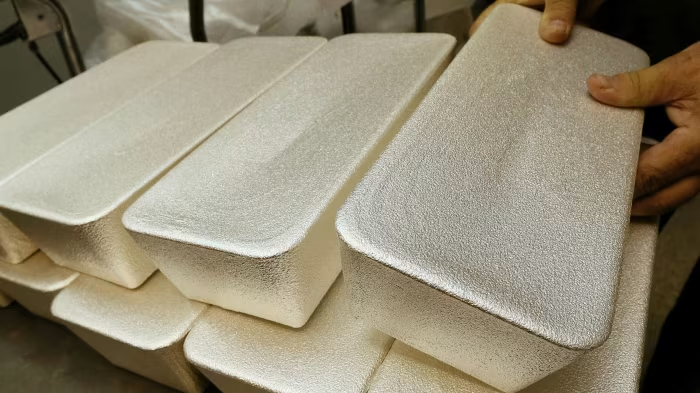Silver prices surged on Tuesday, reaching an unprecedented $53 per ounce in early trading, marking a staggering gain of over 85 percent for the year. The remarkable rally in silver has outstripped even that of gold, which also experienced a boost, hitting a new high of $4,179 per troy ounce with a year-to-date increase of 59 percent. Analysts attribute the surge to a combination of strong investor interest, increasing demand from industries such as electronics and solar panels, and a notable influx of purchases from Indian buyers due to the upcoming wedding season.
Investor appetite for silver as a substitute for gold has played a significant role in driving the price up. With inventories in London nearing historic lows, a premium of $1 to $2 has emerged for silver in the capital compared to prices on the Comex futures in New York. Randy Smallwood, CEO of Wheaton Precious Metals, emphasized that years of depleted supply alongside escalating demand have created a notable shortage in the market. He stated, “There is a serious squeeze on, and you can’t buy substantive physical volumes of silver, it’s just not available.”
Market analysts have noted that the current conditions have left the physical market in London in a precarious state. Nicky Shiels from MKS Pamp warned of an “unprecedented tightness in silver” that has effectively stalled trading activity. This has led some traders to adopt unusual methods of transport, including flying silver from New York to London in cargo planes—a move typically reserved for gold, as silver is generally shipped via larger vessels.
Interestingly, the price spike of silver has already surpassed levels seen during the infamous Hunt brothers’ silver squeeze in 1980, leading traders to refer to silver as “gold on steroids” due to its more volatile price movements during times of market instability. Unlike gold, which is held by numerous central banks as a reserve asset, silver lacks a consistent “seller of last resort,” exacerbating liquidity challenges.
Concerns regarding potential U.S. tariffs have added to the complexity of the current situation, resulting in a build-up of physical silver in New York while the market is left waiting for decisions on possible levies that could affect imports. Shiels noted that the physical silver is “sitting locked up in the ‘wrong’ location,” contributing further to the squeeze in London.
The challenges associated with silver supply are often linked to its status as a byproduct of mining operations for other metals, such as lead and zinc, limiting its production capacity. As demand continues to surge amidst these supply constraints, the outlook for silver remains exceptionally dynamic and unpredictable. The ongoing situation highlights the intricate relationship between market forces and global demand, illustrating the complexities of precious metal trading in today’s economic landscape.







